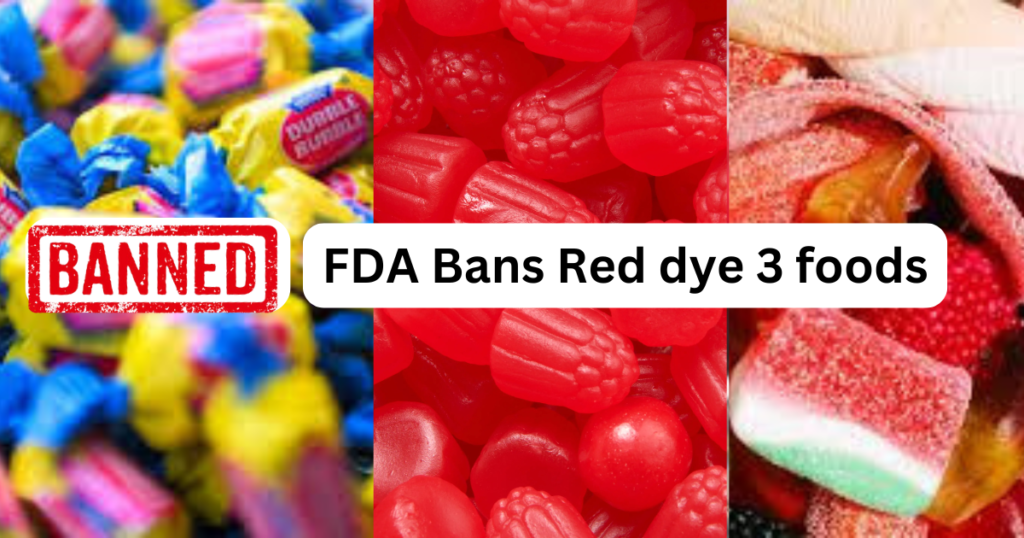The U.S. Food and Drug Administration (FDA) has officially banned the use of Red Dye 3 (also known as Red No. 3 or erythrosine) in foods, candies, and ingested medications, citing cancer risks observed in animal studies. This landmark decision, announced on June 26, 2024, follows decades of advocacy by consumer safety groups and marks a pivotal shift in food safety regulation.

Why Did the FDA Ban Red Dye 3?
The ban stems from the Delaney Clause, a 1960s-era regulation that prohibits FDA approval of additives linked to cancer in humans or animals. While studies found that high doses of Red Dye 3 caused thyroid tumors in male lab rats, the FDA clarified that the cancer mechanism in rats does not translate to humans. Still, under U.S. law, any evidence of carcinogenicity mandates a ban—no exceptions.
“This is a long-overdue victory for public health,” said Dr. Peter Lurie, president of the Center for Science in the Public Interest (CSPI), which petitioned the FDA in 2022. “Red Dye 3 has been illegal in cosmetics since 1990, yet it’s lingered in candies and medicines marketed to children. Finally, that loophole is closed.”
Where Is Red Dye 3 Found?
The synthetic dye—known for its vibrant cherry-red color—has been a staple in:
- Candies: Pez, Nerds, and holiday-themed sweets.
- Baked goods: Frostings, cookies, and toaster pastries.
- Processed foods: Maraschino cherries, fruit cups, and flavored drinks.
- Medications: Cough syrups and chewable vitamins.
Major brands like Dole have already phased out the additive. However, many products still rely on Red Dye 3, prompting urgent reformulations.
What Are Seed Oils — Are seed oils bad for you?
Compliance Deadlines and Global Impact
Food manufacturers must eliminate Red Dye 3 by January 2027, while drugmakers have until January 2028. Imported goods must also comply, aligning the U.S. with stricter regulations in the EU, Australia, and New Zealand, where the dye is already restricted. California preempted the federal ban in 2023, signaling growing state-level scrutiny of food additives.
The Shift to Alternatives Like Red 40
As companies scramble to replace Red Dye 3, many are turning to Red Dye 40, a similar synthetic colorant. But this alternative isn’t without controversy:
- A 2022 study linked Red 40 to bowel inflammation in mice.
- The UK’s Food Standards Agency tied it to hyperactivity in children.
- California banned it in school foods starting in 2023.
Critics argue the FDA’s move merely shifts the problem. “We’re swapping one questionable additive for another,” warns nutritionist Lisa Lefferts of CSPI. “The real solution is moving toward natural color sources.”
8 Top Low Carb Vegetables for Health Management
Industry Response and Consumer Safety
The National Confectioners Association (NCA) pledged compliance but emphasized that “food safety is our top priority.” Meanwhile, advocacy groups urge consumers to check labels for erythrosine or Red No. 3 and avoid products containing the dye until reformulations are complete.
The Bigger Picture: A Regulatory Wake-Up Call
This ban underscores the FDA’s tightening stance on additives under the Delaney Clause. In 2018, the agency banned synthetic flavors for similar cancer concerns, and Red Dye 3’s prohibition signals a broader push for transparency. With 3 out of 10 Champions Trophy 2025 cricket matches also washed out in Pakistan due to poor drainage—another infrastructure failure—critics question why safety protocols lag behind in regulated industries worldwide.
For now, the FDA’s decision is a win for consumer advocates. But as Lurie notes, “The fight isn’t over. This ban should catalyze a larger overhaul of how we regulate food chemicals.”